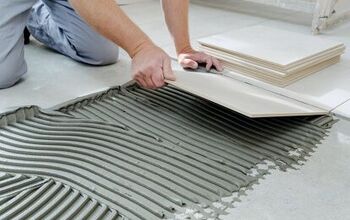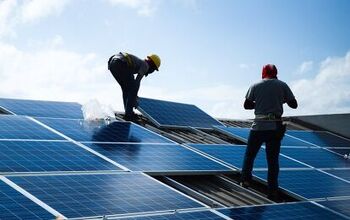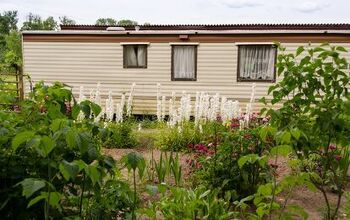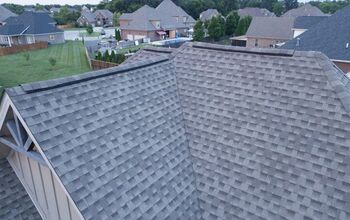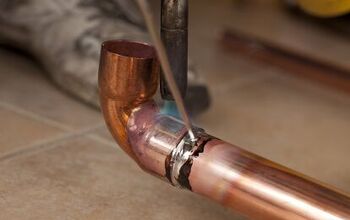What Is A CBS Home? (Find Out Now!)
There are so many factors that go into choosing your type of home construction. Whether you’re shopping around or looking to build your house from the ground up, it can be overwhelming. You know about the all-to-common wood frame homes, but another type of house keeps popping up: CBS homes. So, what is a CBS home, and why is it growing in popularity?
A CBS home is a concrete block structure made for residential use. The exterior walls and sometimes partition walls of the home are built from stacked concrete blocks. The exterior is usually finished with a stucco or plywood skin to make it look visually pleasing. CBS homes have a number of advantages over wood frame homes, especially durability.
Wondering if a concrete block structure home is right for you? Keep reading to find out exactly what a CBS home is, and how it compares to a traditional wood frame home.
Do You Need to Hire an Architect or a Builder?
Get free, zero-commitment quotes from pro contractors near you.

What is a Concrete Block Structure (CBS)?
A concrete block structure, or CBS, is a building constructed out of concrete blocks. Stacked up like bricks, these concrete blocks create the exterior walls of a home. They are also often used in constructing interior partition walls, which is the personal choice of builders and homeowners.
These rectangular concrete blocks traditionally come in 8”x8”x16” dimensions. Their pricing can range from $1-$3 per block, depending on the density and size of the block. Hollow concrete blocks tend to be more affordable than solid concrete blocks.
Concrete block structures have been popular in Europe for a long while now, and are gaining popularity in the US. CBS homes are known to be particularly durable and weather-resistant due to their concrete construction. Because of this, it’s common to see CBS homes in places that experience powerful storms, like Florida.
How CBS Homes are Constructed
The construction of a CBS home starts with pouring a concrete foundation. Then concrete blocks, referred to as concrete masonry units (CMUs), are stacked to create the exterior walls. Similar to a brick construction, each block is stacked and a mortar filling is applied to hold them together.
These concrete masonry units (CMUs) come in a variety of styles. You can choose from solid concrete blocks, hollow blocks, splitface blocks, and others. After the walls are all stacked and set, a stucco or plywood skin can be applied to make the outside of the home look visually pleasing.
While many criticisms of CBS homes involve how unattractive they look, this doesn’t have to be the case. With the right stucco or plywood facade, CBS homes can look just like every other house in the neighborhood. And when constructed properly, CBS homes can withstand a lot of environmental stressors.
Concrete Block Structures vs. Wood Frame Structures
Now that you know what CBS homes are, let’s compare them to another common home construction: wood frame structures. They both have their advantages and disadvantages. What’s right for your situation will depend on your location, budget, and personal tastes.
Wood Frame Structure
A wood frame is one of the most common types of residential constructions. These structures are built with framing lumber and joists that form the interior and exterior walls and roof of the home. These are built on top of a foundation. Then drywall is attached to the studs for the interior finish. There are many different options for finishing the outside of the home, such as paneling, stucco, etc.
Wood frame structures are generally cheaper and easier to construct than CBS structures. They can also handle a moderate amount of environmental stressors. But they are far more susceptible to termite, mold, and fire damage. If you live in a location that experiences frequent intense storms like Florida, CBS structures are a safer option.
- Cheaper construction costs.
- Lightweight materials, making for easier and faster construction.
- Materials are plentiful and easy to purchase.
- Can handle moderate environmental stressors.
- Generally more energy efficient.
- More expensive to insure; less coverage when home is damaged.
- Increased risk of termite infestation.
- More likely to have mold and dry rot damage.
- Greater fire hazard than concrete.
- Withstands far less wind and water than concrete.
Concrete Block Structure
Concrete block structure (CBS) homes are quickly growing in popularity, and for good reason. These homes made of concrete may be more expensive to construct, but they are built to last. Their construction means they can withstand intense hurricane-level storms.
For homeowners living in states like Florida, or places that get hit with tornadoes, CBS homes will be more durable. And while maybe less visually aesthetic than wood frames, they are more resistant to fire, noise pollution, and mold or termites. This means insurance companies favor these structures.
How much money you invest in building a CBS home really depends on the size and density of the concrete blocks. You can save quite a bit by opting for hollow concrete blocks that can be fitted with steel bars or filled in with mortar. Solid concrete blocks will cost more and are more difficult to work with.
Pros- Resistant to fire.
- Less prone to termite infestations and mold damage.
- Cut down on noise pollution.
- Tend to last longer than wood frame structures.
- Can better withstand fast wind speeds, floods, and other intense storms.
- Generally has a higher resale value.
- Cheaper to insure – studies show an average builder’s risk insurance savings of 22% – 72%.
- More expensive materials and construction costs: $1-$3 per concrete block.
- Takes longer to build, requires more skilled laborers.
- If not built properly, costly issues can occur down the road.
- Less visually appealing than wood frame structures, requires an exterior design to look “homier”.
Other Types of Concrete Structures
A concrete block construction isn’t the only form of concrete structure. There are other ways to use concrete when building something. Here are some other types of concrete structures:
- Insulating Concrete Forms (ICFs): Concrete is poured into permanent forms. These forms are made of interlocking blocks, or panels and planks that are linked together by ties. The permanent forms are made of insulating materials. This type of concrete structure is the best option when good insulation is a priority.
- Removable Forms: This type of concrete structure starts with removable wall forms that are made of steel, wood, or aluminum. First, reinforcing steel and insulation are placed within the removable forms. Then concrete is poured into the forms. Finally, when the concrete is cured, the forms are removed. This type of concrete structures are highly resistant to intense winds.
- Panel Structure: Concrete panel structures can be made in two ways. The first is precast concrete, which is when the exterior walls with openings are made at a concrete plant. The other is tilt-up concrete, where the panels are made and erected on site. This type of concrete structure offers a contemporary design.
Do You Need to Hire an Architect or a Builder?
Get free, zero-commitment quotes from pro contractors near you.

Related Questions
What are concrete blocks made out of?
Concrete blocks are made of Portland concrete, aggregates, and water. The mixture may also include sand or gravel. The components depend on the desired density of the concrete masonry unit (CMU).
Why are concrete blocks hollow?
Concrete blocks, or concrete masonry units, are often constructed with hollow cores. This reduces the weight of the blocks. It also improves insulation capabilities. These hollow cores can later be installed with steel bars or filled in with concrete or mortar.
Related Guides
More by Jessica Vaillancourt










